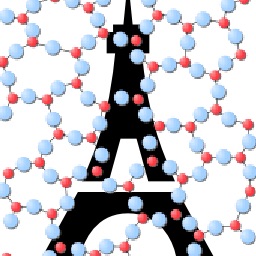Nanoscale Composition-Texture-Property-Relation in Calcium-Silicate-Hydrates
The more than 20 billion tons of concrete, produced every year, is responsible for 5–7% of global anthropogenic carbon dioxide emissions. Yet, there is no other viable material that can substitute concrete to meet the need for civil infrastructure in the developed and developing countries. This leaves reducing concrete’s carbon footprint as the only path forward to meet environmental targets. The strength and durability properties of concrete rely on the calcium-silicate-hydrate (CSH) phase that forms during cement hydration. Controlling the structure and properties of CSH phase is challenging, due to the intrinsic multiscale complexity of this hydration product that spans several orders of magnitude in length scale (from nanometers to microns). The existing lack in scientifically consistent insights into structure and properties of CSH has been the major obstacle to the development of greener formulations of modern concrete. In this chapter, we review how bridging general concepts from condense matter physics to cement and concrete research has revolutionized our contemporary understanding of the CSH phase and its making-up at the nanoscale, redefining this ubiquitous material described simultaneously as a spanning space continuous matrix and as a cohesive granular material that degrades and creeps over time.
